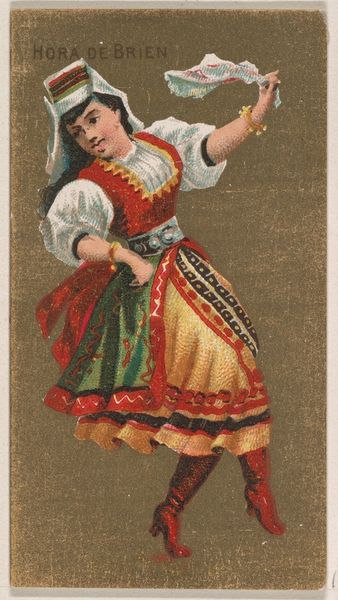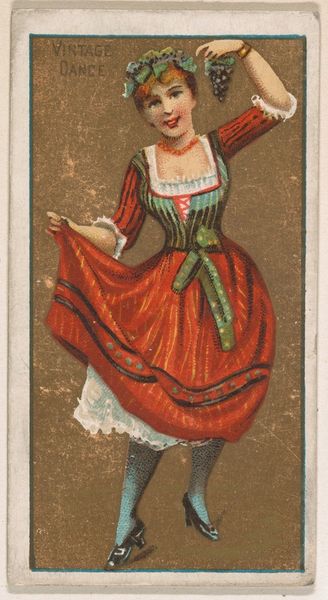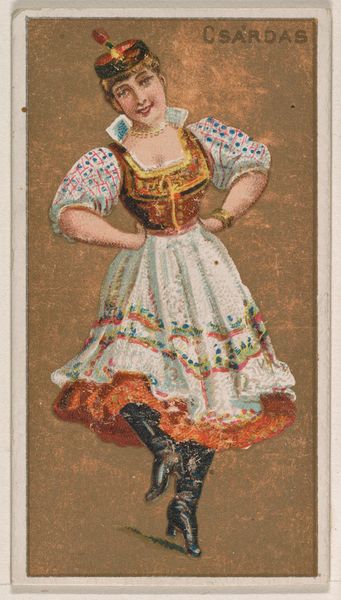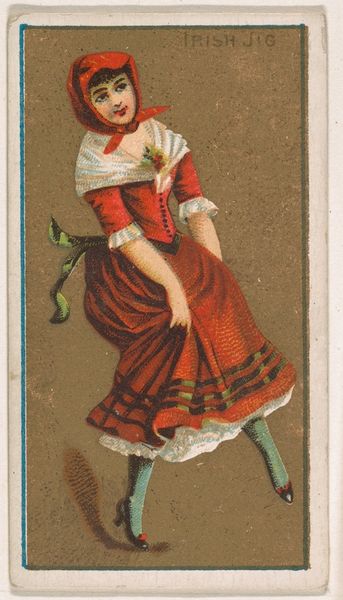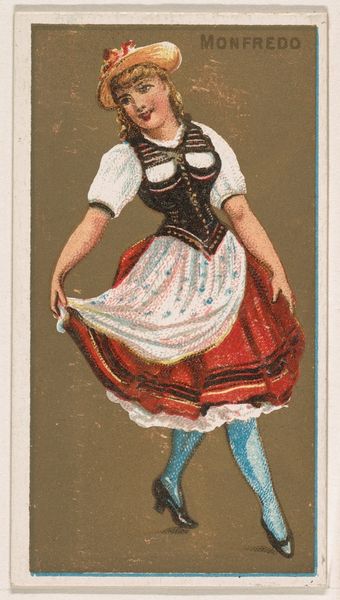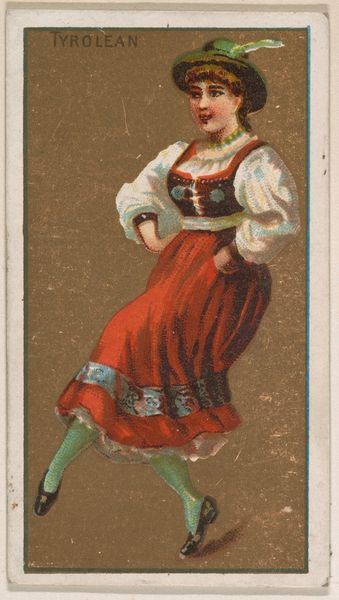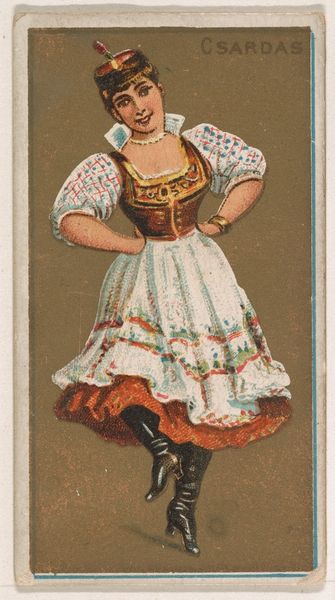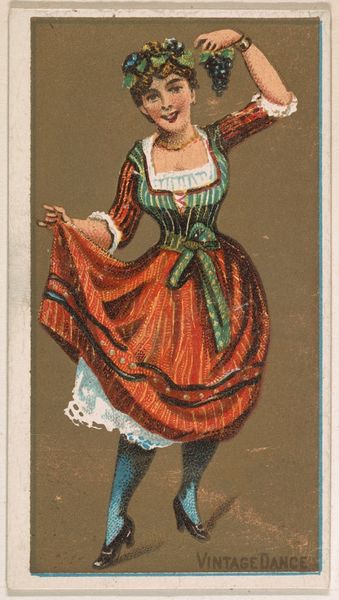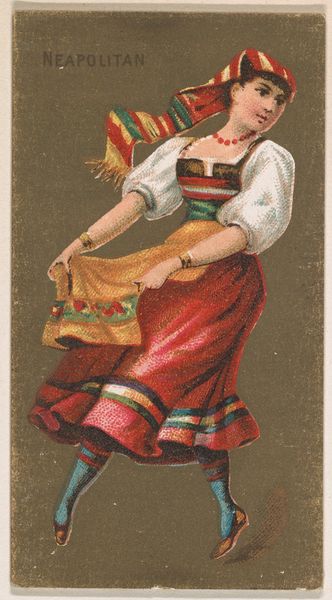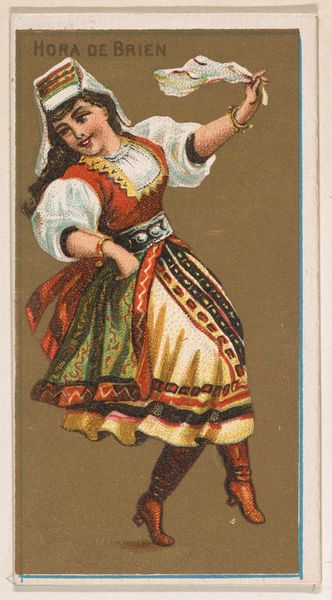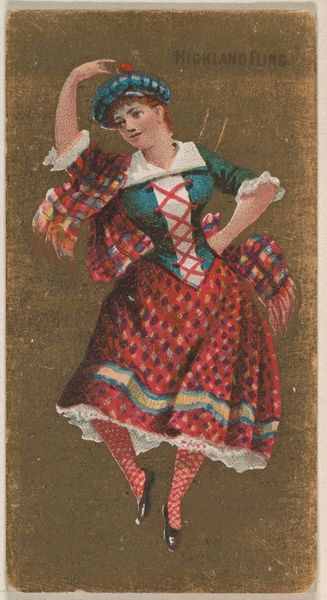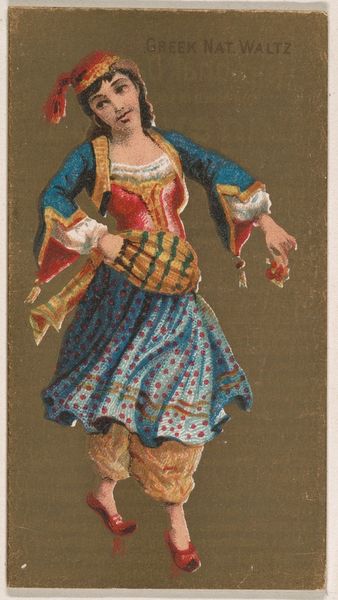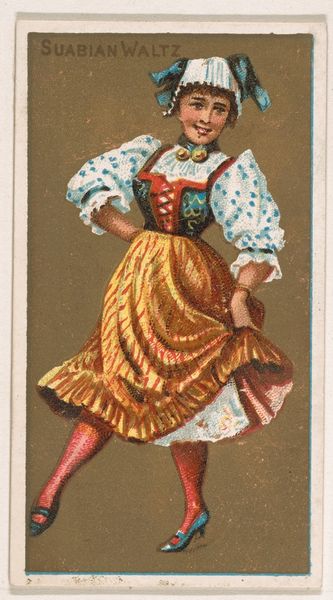
Tarantella, from National Dances (N225, Type 2) issued by Kinney Bros. 1889
0:00
0:00
Dimensions: Sheet: 2 3/4 × 1 1/2 in. (7 × 3.8 cm)
Copyright: Public Domain
Curator: This small chromolithograph, entitled "Tarantella," comes from a series called "National Dances" issued by the Kinney Bros. Tobacco Company in 1889. The vibrant colours are immediately striking. Editor: Indeed! The motion practically vibrates off the card, doesn't it? There's a clear narrative implication, but also a distinct exoticizing gaze, even within a commercial context. I immediately think about the representation of labor, and who this ‘national dance’ truly represents. Curator: Absolutely. It's fascinating to consider these tobacco cards as a form of early mass media, circulating images and ideas widely. Note how the process allows for incredibly precise registration of color. This required highly skilled labor, often outsourced, particularly for the complex die-cutting required to separate the cards. Editor: And in whose hands did the tobacco itself eventually end up? The imagery of national dance romanticizes global culture and obscures the darker side of the company’s history of distribution and commodification. Consider how dance—usually tied to resistance and cultural memory—is packaged here. Curator: That's right. Consider the material components, too: the paper stock itself, likely produced in large quantities in mechanized mills; the inks, mixed with precise formulas. The company used advanced techniques for reproduction—lithography allowing a wide distribution network to develop. These became collectable commodities in themselves! Editor: This image, like many commercial depictions of women performing “folk dances”, can easily lend itself to stereotypical fantasies. To consume a tobacco product along with the card solidifies both material exchange and potential problematic narratives regarding nation, gender, and ethnicity. I'm left to ponder how far we have truly come from these dynamics. Curator: It's remarkable how such a small, seemingly innocuous piece of ephemera can reveal so much about industrial processes, cultural exchange, and societal attitudes. It forces us to reflect on mass production, distribution networks and social hierarchies. Editor: Yes, absolutely, the politics of representation intersect with the commodification of culture on a grand scale. These cards tell layered and discomforting histories that echo even today.
Comments
No comments
Be the first to comment and join the conversation on the ultimate creative platform.
